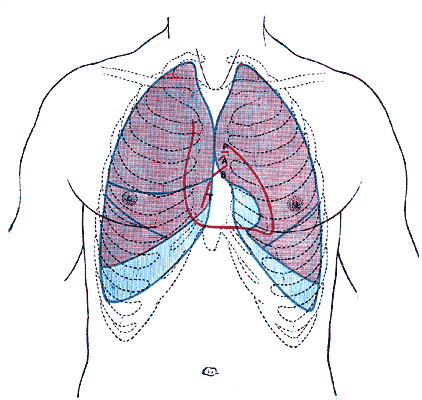Cancer or carcinoma an important cause of death from non-infectious disease around the world can affect almost any organ or tissue & the incidence of which is showing the trend of increasing rather than decreasing although there is progress being made everyday with clinical and public health. Lung cancer remains the most common cancer among both sexes, holding the top position among males and third position among females and most importantly holding the position of most common cause of cancer death around the world with 1.59 million death in 2012 according to WHO.
The incidence is on the rise with the increased use of tobacco specially in the developing world and increased air pollution due to rapid industrialisation with more focus on profit and growth and little interest in human life and environment. Lung cancers are divided in 2 groups therapeutically, non small cell lung cancer (NSCLC) and the deadlier Small cell lung cancer (SCLC).
Small cell carcinoma of lung is divided into mainly two stages, the limited stage (I-III) and extensive stage (IV) small cell lung cancer.
SCLC is more responsive to chemotherapy and radiation therapy than other cell types of lung cancer; however, a cure is difficult to achieve because SCLC has a greater tendency to be widely disseminated by the time of diagnosis and majority of the patients are stage IV.
The first line chemotherapeutic recommendation is carboplatin or cisplatin with etoposide or irinotecan. Another option is doxorubicin plus vincristine with cyclophosphamide.
Chemotherapeutics should be used maximum 4-6 cycle. Second line chemotherapy includes is used if patient relapses or remains refractory. If the relapse occurs after 6months or more disease free survival then the original first line chemotherapeutics can be repeated with 60-100% response rate.
If otherwise then single or combination of carboplatin, cisplatin, irinotecan, etoposide, paclitaxel, topotecan can be used. If these fail then another of these agents can be used as third line.
Prophylactic cranial radiation prevents central nervous system recurrence and can improve survival in patients with good performance status who have had a complete response or a very good partial response to chemotherapy in stage IV disease. Despite these treatments In patients with stage IV median survival of 6 to 12 months is reported with currently available therapy, and long-term disease-free survival is rare. All patients with this type of cancer may appropriately be considered for inclusion in clinical trials at the time of diagnosis.
SCLC is more responsive to chemotherapy and radiation therapy than other cell types of lung cancer; however, a cure is difficult to achieve because SCLC has a greater tendency to be widely disseminated by the time of diagnosis and majority of the patients are stage IV.
The first line chemotherapeutic recommendation is carboplatin or cisplatin with etoposide or irinotecan. Another option is doxorubicin plus vincristine with cyclophosphamide.
Chemotherapeutics should be used maximum 4-6 cycle. Second line chemotherapy includes is used if patient relapses or remains refractory. If the relapse occurs after 6months or more disease free survival then the original first line chemotherapeutics can be repeated with 60-100% response rate.
If otherwise then single or combination of carboplatin, cisplatin, irinotecan, etoposide, paclitaxel, topotecan can be used. If these fail then another of these agents can be used as third line.
Prophylactic cranial radiation prevents central nervous system recurrence and can improve survival in patients with good performance status who have had a complete response or a very good partial response to chemotherapy in stage IV disease. Despite these treatments In patients with stage IV median survival of 6 to 12 months is reported with currently available therapy, and long-term disease-free survival is rare. All patients with this type of cancer may appropriately be considered for inclusion in clinical trials at the time of diagnosis.










